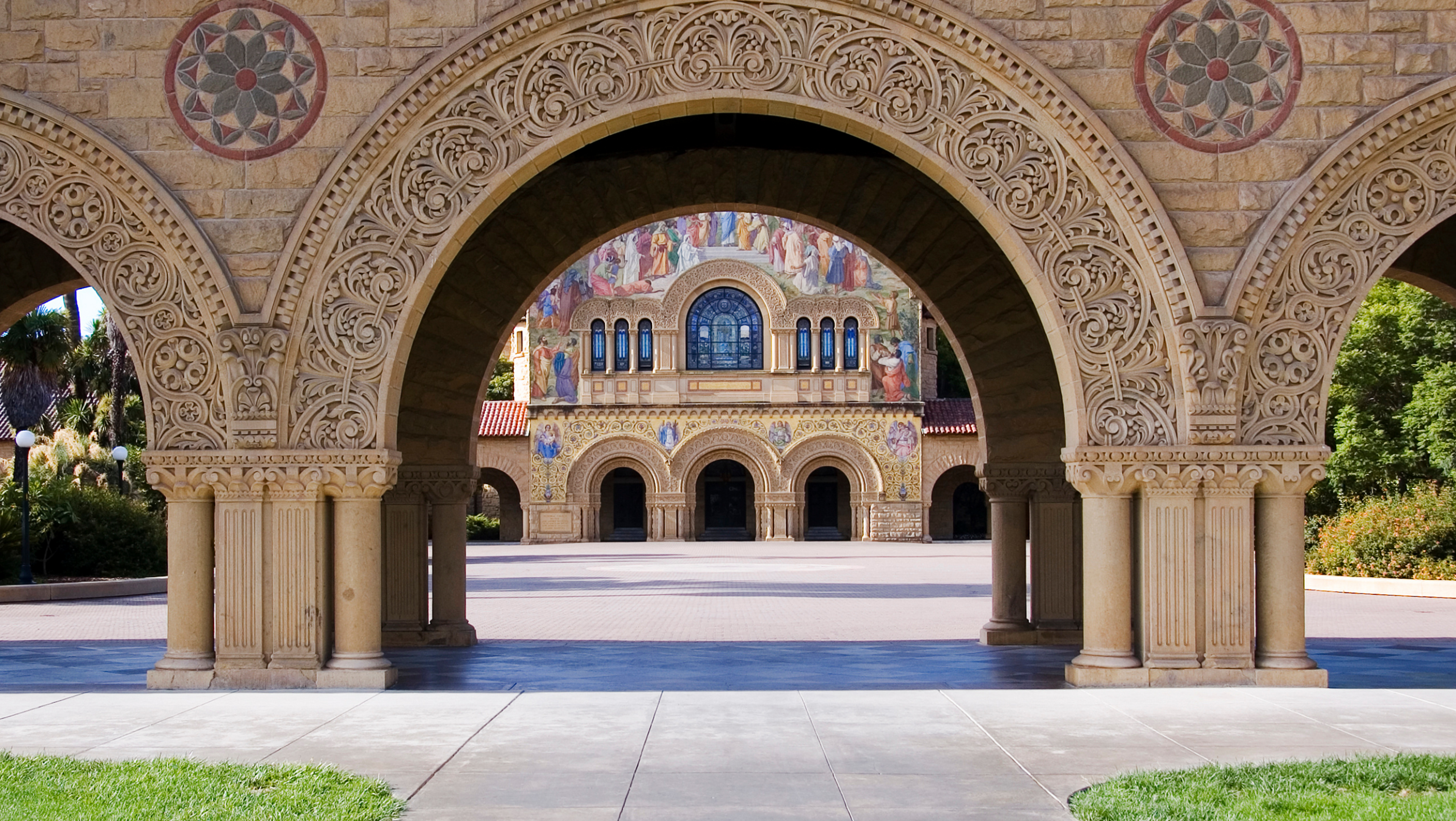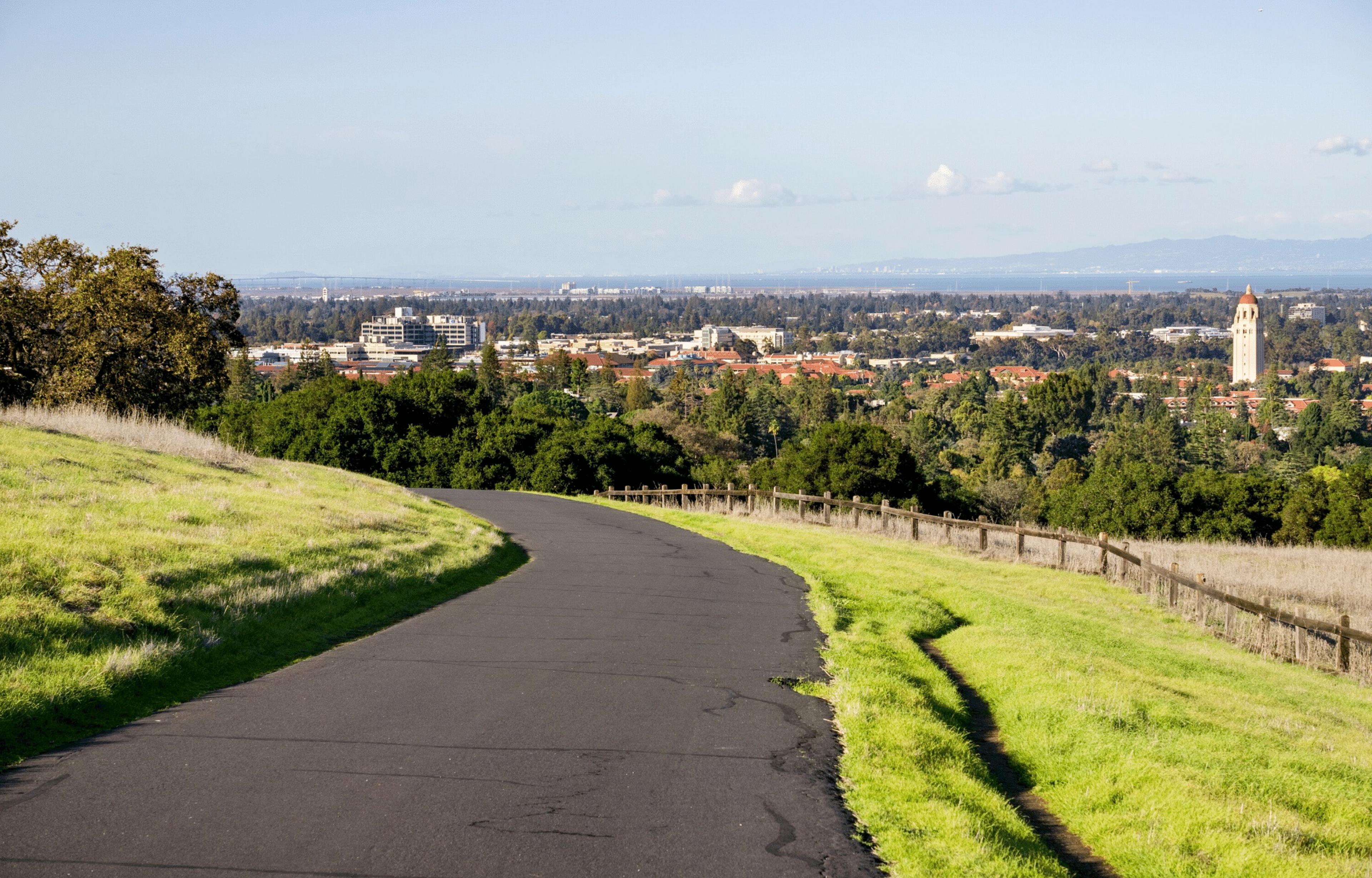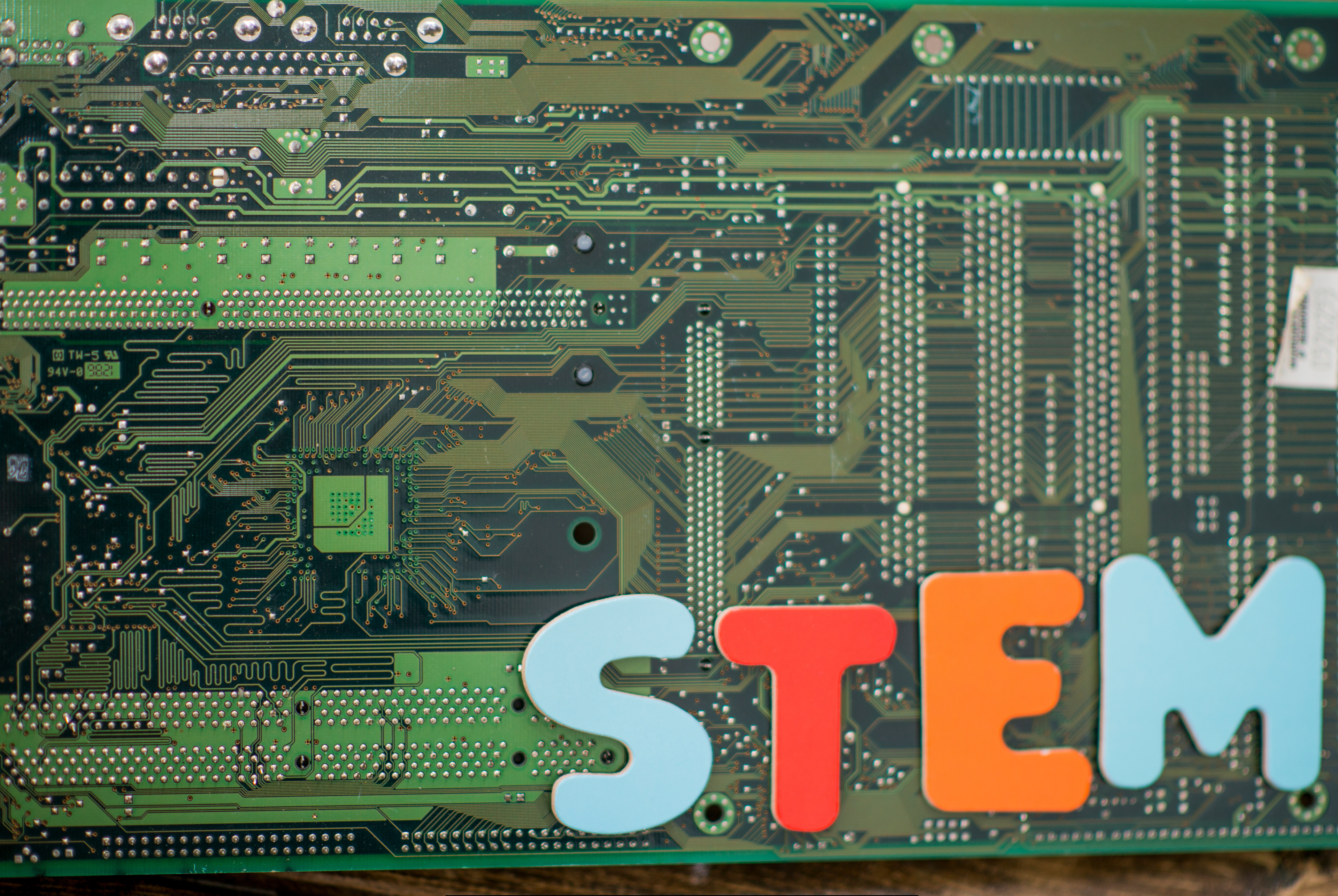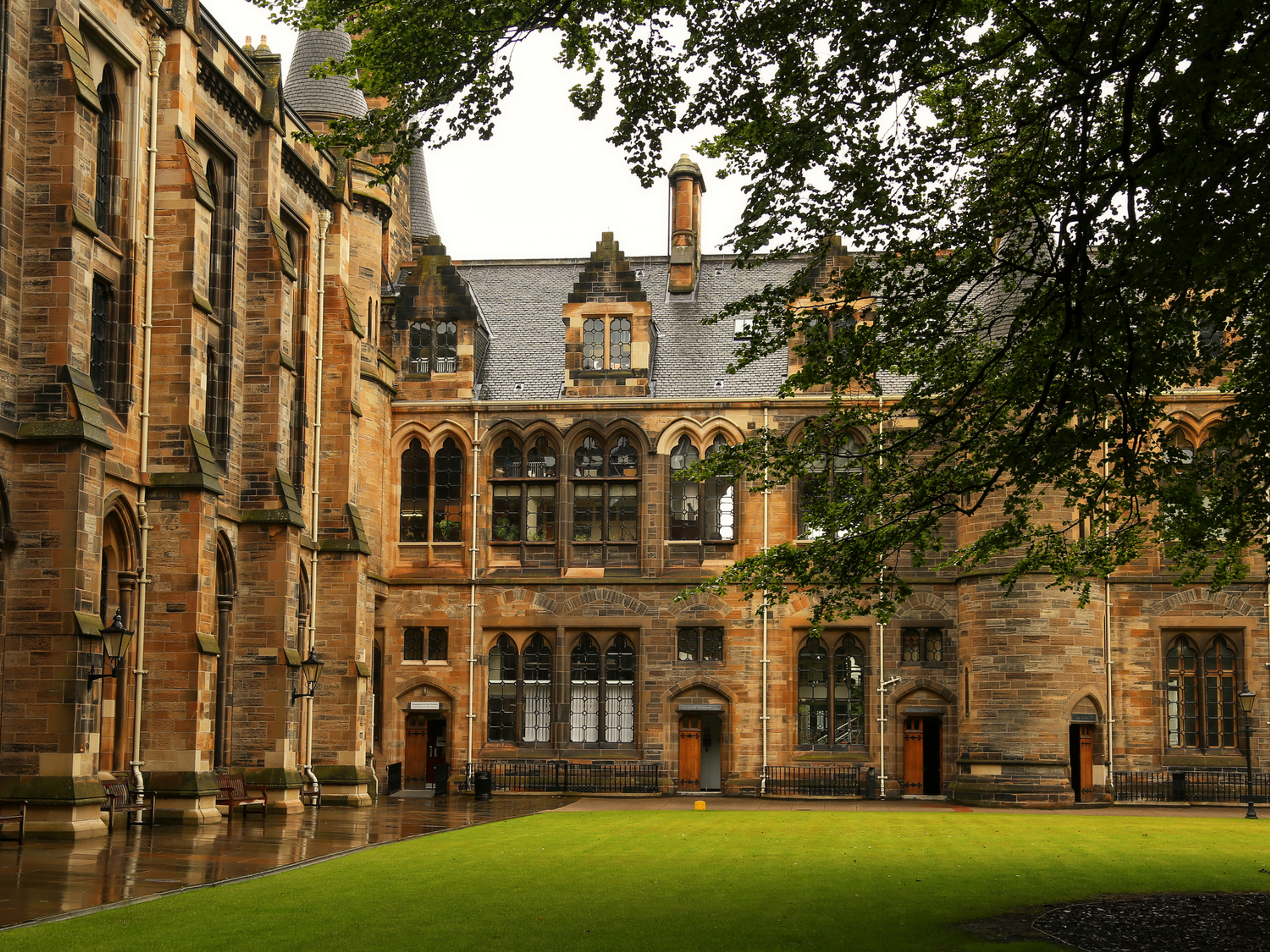Stanford MBA Essay Guide – With Real Examples, Questions, and Expert Tips (2025)
See this guide to Stanford MBA essays. Discover the 2025 prompts, expert tips for writing standout Stanford GSB essays, and real Stanford MBA essay examples.
By Timothy F.
Former Ad Comm | 150+ M7 Admits | Ranked top 4 firm on Poets & Quants 2025
Posted June 13, 2025

Table of Contents
Free Event

Featuring Horatiu S.
Profile Power: A LinkedIn Profile That Gets You In
Starting Tuesday, September 2
11:00 PM UTC · 45 minutes

Featuring Horatiu S.
Writing your Stanford MBA essays might feel overwhelming. After all, you're being asked to share what matters most to you and why. It's not just about impressing the admissions committee, but revealing who you are beneath your resume.
This guide breaks down exactly what Stanford is looking for in 2025, with strategic advice, common pitfalls, and real essay examples to help you find your voice. Whether you're just getting started or revising a final draft, you'll leave with a clearer plan and a more compelling story.
Read: Stanford GSB — MBA Program & Application Overview
Overview of the Stanford MBA Essays
The Stanford Graduate School of Business (GSB) asks applicants to complete two personal essays as part of the application process.
Here’s what you need to know:
- Required essays: 2
- Essay A: What matters most to you, and why?
- Essay B: Why Stanford?
- Suggested word count: 650 words for Essay A, 350 for Essay B
- Essays combined: 1,000 words max
- There are also three optional short answer questions (1,200 characters each) which ask you to describe impactful experiences, and an additional essay for extenuating circumstances affecting academic or work performance
These two required essays are at the heart of the Stanford GSB application, offering the admissions committee a window into your personal values, aspirations, and fit for the Stanford MBA program. The goal is to reflect deeply, be honest, and connect your personal and professional journey to the Stanford GSB experience.
2025 Stanford GSB Essay Prompts
Essay A: What matters most to you, and why?
This is the first and most distinctive of the Stanford MBA essays, setting the tone for your entire application. Why this question? The admissions committee uses Essay A to understand who you are at your core. Your answer should explore your personal life, beliefs, and defining moments – not just your resume. They want to see self-awareness, values, and the "why" behind your life decisions.
Many applicants worry about choosing the “right” topic, but there’s no single correct answer. What matters most is that you:
- Choose something genuinely meaningful
- Share background or life experiences that have shaped you, informed your character, or contributed to your values
- Reflect deeply, don’t just describe what happened, but explain how it personally affected you and why it matters so much to you
Essay B: Why Stanford?
Essay B is your opportunity to connect your career path and goals with the Stanford GSB experience. This is where you show how Stanford is uniquely aligned with your aspirations. Think beyond generalities - you need to clearly explain to them why you need an MBA and how Stanford is best positioned to help you achieve your objectives. The admissions committee wants to see that you understand what makes Stanford distinctive—and how it fits your specific goals, interests, and learning style. It needs to be specific and feel personal.
Address how Stanford’s academic resources, global exposure, leadership development, and peer community will help you create a positive impact in your chosen field. Expert tip: The MBA and MSx program use Essay B to assess program fit, so be sure to mention elements specific to business school and tie them to your unique goals.
Optional Essays & Additional Opportunities
While the two required Stanford GSB essays form the heart of your application, you’ll also have access to a few optional sections. These aren’t required, but most applicants use them. If used well, they can strengthen your overall narrative.
Optional Short Answer: Contributions & Impact
This section invites you to expand on meaningful contributions, especially those that may not fit neatly into your resume or main essays.
Prompt: Think about times you’ve created a positive impact, whether in professional, extracurricular, academic, or other settings. What was your impact? What made it significant to you or to others?
You may include up to three examples, with 1,200 characters (approximately 200 words) for each. This is a unique opportunity to showcase real impact across settings, highlight your leadership skills, and reinforce Stanford’s mission to “Change lives. Change organizations. Change the world.”
We recommend treating this not as a throwaway box, but as a strategic space to show what kind of difference you’ve made—and will continue to make as a GSB student and alum. The experience needs to be clear and the impact tangible.
Optional Additional Context
Located in the Personal Information section, this optional opportunity allows you to share how your background or life experiences have shaped your recent actions or perspectives. You might use this to reflect on cultural context, challenges you've navigated, or defining elements of your identity.
With just 1,200 characters, be concise but meaningful. Tie your insights to actions, decisions, or perspectives you've taken recently, ideally complementing what you shared in your two personal essays.
Optional Additional Information
Finally, this space is reserved for critical information that hasn’t been covered elsewhere, like extenuating circumstances affecting academic or work performance, significant gaps, or context around transcripts or test scores.
It’s not the place for another essay. Only complete this section if it adds necessary, relevant clarity for the admissions committee to fairly evaluate your candidacy. Many applicants use this space to share more context around these extenuating circumstances and to provide more details about how the applicant has taken additional steps to ensure they are fully ready to meet the expectations that will be required to succeed at the GSB.
How to Approach Each Stanford GSB Essay Prompt
Essay A: Go Deep, Not Wide
What the ad comm is looking for:
This essay is your invitation to connect with the Stanford GSB Admissions Committee on a deeper level. They are seeking to understand the wellspring of your ambitions and the formative moments that have shaped your perspective. Take this opportunity to reflect on your core values – the beliefs that define your character – and share the narrative of how those values have evolved and guided you. Let your authentic voice resonate and offer them a genuine glimpse into what truly motivates you.
How to get started:
The best answers to Essay A are introspective and layered. Start by brainstorming pivotal moments in your personal life, professional, extracurricular, and academic journey. Then ask: What’s the common thread? What does it reveal about what drives me?
- Focus on one core value or belief - the best essays often follow a theme
- Use up to three examples to illustrate it
- Avoid trying to impress – this essay should not read like a summary of all you have accomplished
- Focus on what you learned and how you were changed throughout the experiences
- Be authentic - highlight moments that show growth, struggle, or conviction
Essay B: Why Stanford, Specifically?
What the ad comm is looking for:
This essay serves as a platform for the Stanford GSB Admissions Committee to understand your career ambitions, evaluate your likelihood of achieving them, and ascertain your awareness and planned utilization of the GSB's unique advantages. They seek applicants who present well-defined career goals, a logical progression of experiences demonstrating their commitment, and a clear articulation of how the GSB's offerings will strategically enhance their journey.
How to get started:
This is where many applicants fall flat. Avoid vague goals or name-dropping classes. Instead:
- Clearly state your goals
- Articulate how your immediate professional plans will prepare you to achieve them and why you need an MBA
- Tie your goals to Stanford’s specific resources
- Explain how the Stanford MBA will help you create a positive impact
- Mention clubs, courses, or professors that align with your interests and connect them to you
- Clarify why Stanford GSB, not just an MBA program that is right for you
Effective Stanford MBA essays in this section demonstrate program knowledge, purpose, and self-awareness. Use the phrase “Essay B: Why Stanford” in your outline and consider how the Stanford GSB essay B highlights your thoughtfulness around fit and future goals.
Read: How to Write the Best MBA Essays – From an Admissions Consultant (With Examples)
Common Mistakes to Avoid in Stanford MBA Essays
One of the most common mistakes applicants make in their Stanford GSB essays is listing achievements without introspection. Stanford isn’t looking for a résumé in paragraph form – they want to understand why your experiences matter to you, how they’ve shaped your values, and what they reveal about your potential for principled leadership. Another frequent misstep is offering generic responses that could apply to any top business school. Stanford’s prompts, especially “What matters most to you and why?”, demand deep personal reflection, not polished soundbites or professional jargon. Reused essays from other applications almost always fall flat unless they’re radically revised to reflect Stanford’s unique culture. If you’re not referencing specific GSB programs, faculty, or values like ‘personal transformation,’ ‘interpersonal dynamics,’ or ‘changing lives, changing organizations, changing the world,’ you're missing a key opportunity to show genuine fit.
The optional essay should also not be overlooked but is truly optional. If there are extenuating circumstances in your academic or career record, that’s your moment to address them clearly and responsibly.
Expert Tip: Most importantly, don’t just try to impress and say what you think the admissions committee wants to hear: be real. Stanford’s admissions readers look at thousands of essays and can spot inauthenticity a mile away. The strongest essays are not the most polished; they’re the most honest. Vulnerability is a feature, not a flaw.
Many applicants, in their enthusiasm for Stanford GSB, are quick to list the school's renowned resources and unique offerings – from the allure of "Startup Garage" to the prestige of its faculty and the vibrancy of its alumni network. However, simply name-dropping these elements without a clear connection to your individual MBA needs and aspirations falls short of what the Admissions Committee seeks. While the appeal of sitting in "Startup Garage" or attending a specific class is understandable, the ad comm's primary focus is not on what Stanford offers, but rather why those specific offerings are critical for your distinct journey and the successful achievement of your clearly articulated career goals. They aren't just looking for appreciation of Stanford's strengths in a vacuum.
Expert Tip: To truly resonate with the Admissions Committee, move beyond a general appreciation for the GSB and instead demonstrate a strategic understanding of how particular programs, centers, faculty expertise, or community aspects will serve as indispensable tools in your toolkit. Your essay should explicitly link Stanford's differentiators to your specific skill gaps, knowledge deficiencies, or network limitations. By outlining how you intend to actively leverage these resources to directly address your unique needs and accelerate your progress towards your clearly defined career goals, you demonstrate a level of self-awareness, strategic thinking, and genuine fit that resonates deeply. Remember, it's not just about wanting to be at Stanford; it's about articulating why Stanford is the essential catalyst for your success.
Real Stanford MBA Essay Examples (with Analysis)
Here are two examples based on anonymized composite applicants:
Example Essay A (Excerpt)
"What matters most to me is bridging cultures through storytelling. Growing up between Nigeria and the U.S., I constantly shifted between worlds. Film became my translator – an emotional bridge that helped others see what I felt but couldn’t explain..."
Why this works: This response is grounded in a deeply personal and emotional truth. Rather than trying to impress, it shares a vulnerable, formative experience that shaped the applicant’s identity. The essay demonstrates values like empathy, communication, and cultural connection, without ever naming them directly. It also highlights the applicant’s unique background and life experiences, revealing how those influences shaped their worldview and leadership style. Importantly, the story feels authentic and specific to the individual, not something that could be copy-pasted into another school’s application.
Example Essay B (Excerpt)
"Stanford GSB’s 'Leadership Perspectives' course and the LOWkeynotes program are ideal for helping me scale my impact. As a nonprofit founder, I need to grow beyond mission-driven passion and develop the financial and strategic skills to lead sustainably."
Why this works: This essay ties the applicant’s goals directly to Stanford GSB’s unique offerings, showing a thoughtful understanding of the Stanford MBA experience. It doesn’t just name-drop programs but also explains why those resources matter for the applicant’s leadership growth. By linking their nonprofit background to a specific developmental need, the applicant shows clarity of purpose and a strong program fit. It’s evident they’ve done their homework and are seeking out the tools that Stanford, specifically, can offer to help them grow their impact.
Stanford GSB Full Example Essay From an Admit
Prompt: What matters most to you and why?
It was the last game of the season, and my freshman high school football team was down three points. This was my first season as volunteer head coach of the school’s ‘B’ team. We had lost all nine of our previous games, I had come to love these kids, and this was our last chance for a win. As the ball was snapped for the final play, I watched with my heart in my throat as the quarterback broke multiple tackles, then I screamed with elation as he dived into the end zone to score a game-winning touchdown. You would have thought we’d won the Super Bowl – players, parents, and coaches stormed the field in celebration. For me, the satisfaction I felt wasn’t the result of the numbers on the scoreboard but the end of a long, gradual, and challenging process of developing the skills and work ethic of each player, building his confidence, and nurturing a spirit of trust and unity. As I reflect on many similar moments in all aspects of my life, I realize that this process of empowering others to realize their full potential is what matters most to me.
From a young age, I had great examples of how to bring the best out in people. When I was 15, my mother asked XXXX, a struggling teen from an abusive household, to live with us. XXXX’s dad was an abusive alcoholic and his mom was in prison. He had a combative personality, often arguing with my parents, he wasn’t helpful around the house, and I never saw him express gratitude for the sacrifice my mom was making. Throughout the two years XXXX lived with us, I wondered if all the effort my mom made was worth it. XXXX went on to defy the odds, finishing high school, becoming an all-state diver, and graduating college. My question was answered when I saw the joy my mom felt as she watched XXXX succeed.
I experienced empowerment from different perspectives while playing collegiate rugby. I was the only freshman to be named a starter, and several teammates seemed threatened. I sensed that many of them were rooting for me to fail, which caused me to play timid, afraid to make mistakes. Our captain, YYYY, invested real time and energy to make me better and encouraged me to play aggressively. Thanks to his influence, I ended up having a great season. I thought of YYYY often when I was captain of the team three years later. I took every opportunity to encourage and build up each player, instilling confidence with deserved praise and constructive suggestions. While our team advanced to the national semifinals, finishing third in the country, I believe my biggest success was the mutual trust and unity we shared.
Since college, my ability to bring the best in others has been tested and expanded. A year ago, our COO inserted me into the executive team of a subsidiary. While excited for the opportunity, I was uneasy, knowing the members of this team to be cold and critical. I joined the executive team full of energy and ready to make changes, but nearly all of my recommendations were resisted. The culture was one of finger-pointing and defensiveness, and I realized I would have to build an atmosphere of trust. I spent long days working side-by-side with my colleagues, trying to understand their roles, backgrounds, and perspectives, and fighting through awkward conversations. Over time, I established credibility as a leader and earned the trust of each manager by showing my commitment to the organization and by producing quality work. The team started having productive discussions with healthy disagreements, and we established a level of mutual trust that allowed for the best ideas to be adopted, regardless of whose it was. After agreeing on a complete shift in strategy, sales increased by 50% over the past nine months. While it was not easy, creating a culture of trust was essential to having a positive impact as a leader.
My desire to bring the best in people reached a new level this November with the birth of my first child. My greatest hope is to give him the support and encouragement he needs to fulfill his potential. I feel similarly about the eight-year-old boys I currently coach in basketball and the people I teach at church. In any organization I join, bringing out the best in others means bringing out the best in myself, and their success is its own reward.
Final Expert Tips
The Stanford GSB Admissions Committee reads countless essays. To emerge from the noise and offer something unique requires a commitment to thoughtful creation. Labor over your words, ensuring each sentence contributes to a cohesive and compelling portrait of who you are. Refine your message with the precision of a surgeon, removing anything that doesn't serve the core narrative. A truly engaging and authentic document cannot be produced with a hurried and imprecise approach that amalgamates commonly cited personal themes and Stanford differentiators. It demands the dedicated effort to craft a reading experience that is both insightful and memorable.
Bottom Line: The Right Story, with the Right Support
The Stanford MBA essays are unlike any others. They ask you to strip away polish and pretense and speak honestly about what drives you. That’s a powerful opportunity, but it can also be tough to do alone. Working with a top MBA admissions coach can help you gain the clarity, structure, and feedback you need to tell your story with confidence. The best coaches don’t rewrite your essays – they help you reflect more deeply, sharpen your narrative, and stay true to your voice while aligning with what Stanford GSB is really looking for.
Want expert eyes on your Stanford essays? Timothy F. is a GSB alum and top admissions coach who’s helped applicants dig deeper, refine their stories, and get in. Book a free intro call to see if it’s a fit.
Read next:
- Stanford GSB MBA Curriculum - Core, Electives, & Specializations
- Stanford GSB MBA Acceptance Rates
- How to Nail Your Stanford GSB MBA Interview: Overview, Questions, & Tips
- Stanford GSB: MBA Tuition & Fees Breakdown
- The GSB MBA Waitlist Strategy
FAQs on Stanford MBA Essays
How long should Stanford GSB essays be?
- Stanford recommends a combined total of 1,000 words for the two required essays. A good guideline is 650 words for Essay A and 350 for Essay B. There’s also an optional short answer limited to 1,200 characters, and an additional essay if you need to explain extenuating circumstances affecting academic or work performance.
Can I reuse essays from other MBA applications?
- Not a good idea. The Stanford GSB essay questions are uniquely introspective and personal. Recycled essays tend to sound generic and won’t reflect the depth or program fit Stanford is looking for.
Do Stanford MBA essay examples help?
- Yes, when used correctly. Reading strong Stanford MBA essays can give you a sense of tone, depth, and structure. But don’t copy the format—use examples as inspiration, not a template.
Should I write Essay A or Essay B first?
- There’s no rule, but many applicants start with Essay A, since it sets the foundation for your values and story. Once you’re clear on what drives you, it becomes easier to explain why Stanford is the right place to help you grow.
Can I use the same stories in both essays?
- Themes may overlap, but don’t repeat stories or examples. Use Essay A to explore your values and personal journey, and Essay B to show how Stanford fits into your professional goals and leadership development.
Written by Timothy
5.0
(98)
I have helped many applicants successfully gain admission to top MBA programs both in the US and in Europe. I worked as an admissions fellow at Chicago Booth. In this role, I interviewed and reviewed the application details of almost 100 applicants across multiple quarters. I understand how to craft a dynamic story that will jump off the page for Ad Comms. Before pursuing an MBA, I started my career at Goldman Sachs, supporting prime brokerage clients with cash and security instruction and settlement. I am currently a project leader at Boston Consulting Group, advising clients mostly in the Gen AI, enterprise transformation, and org design practice areas. At BCG, I have supported clients with pricing strategy, org design, labor optimization, technology integration, and market analysis projects. I am a client service expert and can share valuable insight into how to successfully recruit and be successful at a top-tier investment bank or consulting firm. I earned a B.S. in Economics and in Finance from Utah State University and an MBA with high distinction from The University of Chicago Booth School of Business, where I graduated as an Amy and Richard F. Wallman Scholar.
Timothy has helped clients get into organizations like:
Chicago Booth
Kellogg School of Management (Northwestern)
Columbia Business School
The Wharton School (UPenn)
Yale School of Management











